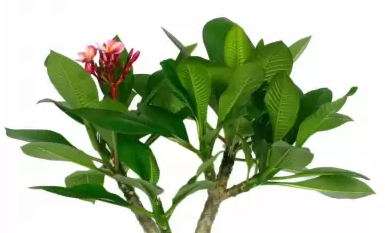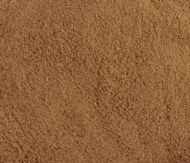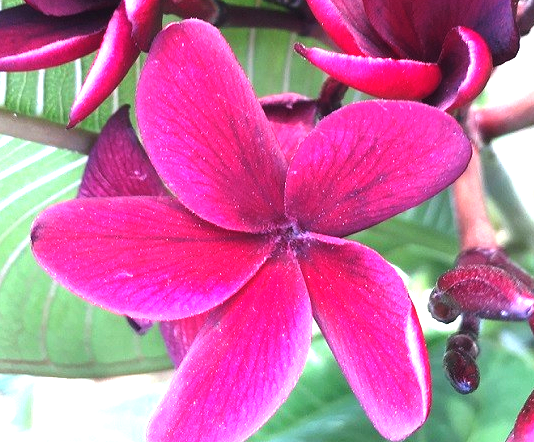Plumeria Rubra flower/leaf/stem water is the extract obtained by drying and subsequent grinding of flowers, leaves and stems of the endemic deciduous shrub Plumeria Rubra L. belonging to the Apocynaceae family, native to Central America, Mexico, Venezuela and Colombia and also cultivated in tropical and subtropical countries.

It is known by the names Frangipani and Lal Champa. In addition to being an ornamental plant with aromatic five-petalled flowers in intense and vivid red and white or yellow and white, it has been used for decades by traditional medical science.
The extract appears in the form of a brown-coloured powder.

What it is used for and where
Medicial
Plumeria Rubra has a phytochemical composition that includes flavonoids, phytosterols, alkaloids, coumarins, terpenoids and in particular: α-allamcidin, α-amyrin, β-allamcidin, β-amyrin acetate, β-sitosterol, 13-O-p-cumaroylplumieride, 15-demethylplumieride, 2,4,6-trimethoxyaniline, 2,5-dimethoxy-p-benzoquinone, 3-O-caffeylquinic acid, allamandine, allamcine, arjunolic acid, benzyl salicylate, betulinic acid, citric acid, fulvoplumierin, gaertneroside, isoplumericin, kaempferol, kaempferol-3-rutinoside, kaempferol-3-O-glucoside, liriodendra, lupeol, lupeol acetate, lupeol carboxylic acid maslinic acid, methyl salicylate, naphthalene, narcissin, nerolidol, oleanolic acid, oleic acid, P-(E)-coumaric acid, plumericidine, plumericin, plumerinine, plumerubroside, plumieride, plumieride-E-p-cumarate quercetin 3-O -α-L-arabinopyranoside, quercitrin, quercetin, quinic acid, rubradoid, rubrajaleelol, rubranonoside, rutin, scopoletin, stigmasterol, stigmast-7-enol, sweroside, taraxasteryl acetate and ursolic acid (1).
In traditional medical practice, the decoction made from the bark was used for the treatment of asthma, diarrhoea and emesis.
Plumeria rubra extract from the bark has antipyretic (2), vasorelaxant, anticoagulant and antioxidant (3) activities.
Cosmetics
Antioxidant agent. Ingredient that counteracts oxidative stress and prevents cell damage. Free radicals, pathological inflammatory processes, reactive nitrogen species and reactive oxygen species are responsible for the ageing process and many diseases caused by oxidation.
Skin protectant. It creates a protective barrier on the skin to defend it from harmful substances, irritants, allergens, pathogens that can cause various inflammatory conditions. These products can also improve the natural skin barrier and in most cases more than one is needed to achieve an effective result.
Skin conditioning agent - Miscellaneous. This ingredient has the task of modifying and improving the condition of the skin when it is damaged or dry, reducing flaking and restoring its elasticity.
The phytochemical composition of Plumeria Rubra flower/leaf/stem water contains saponins, glycoside compounds that have amphiphilic properties and can reduce surface tension. Saponins function as surfactants with emulsifying and foam-stabilising properties.
For more in-depth information:
Plumeria rubra studies
Typical commercial product characteristics Frangipani Extract Powder
Appearance
| Brown Yellow Powder
|
Loss On Drying
| ≤5.0%
|
Ash Content
| ≤5.0%
|
| As | ≤2ppm
|
| Pb | ≤2ppm
|
| Cd | ≤2ppm
|
| Hg | ≤2ppm
|
Total Plate
| 10,000cfu/g Max
|
Yeast & Mold
| 1,000cfu/g Max
|
Shelf Life
| 2 years |
References_____________________________________________________________________
(1) Bihani T. Plumeria rubra L.- A review on its ethnopharmacological, morphological, phytochemical, pharmacological and toxicological studies. J Ethnopharmacol. 2021 Jan 10;264:113291. doi: 10.1016/j.jep.2020.113291.
(2) Khan I.A., Aziz A., Raza M.A., Saleem M., Bashir S., Alvi A. Study pertaining to the hypothermic activity of Plumeria rubra, Linn. in prostaglandin 1 and typhoid vaccine-induced pyrexia models in rabbits. West Indian Med. J. 2015;12:1. doi: 10.7727/wimj.2015.172.
(3) Khan IA, Hussain M, Syed SK, Saadullah M, Alqahtani AM, Alqahtani T, Aldahish AA, Asiri S, Zeng LH. Pharmacological Justification for the Medicinal Use of Plumeria rubra Linn. in Cardiovascular Disorders. Molecules. 2021 Dec 31;27(1):251. doi: 10.3390/molecules27010251.
![]() Plumeria Rubra flower/leaf/stem extract
Plumeria Rubra flower/leaf/stem extract 



